A Multidisciplinary Approach to Teaching the Marketing of Sustainable Products
Abstract
For myriad reasons, currently in the United States greater attention is being placed on “green” products. Although definitions vary, broadly speaking, the underlying idea is to produce products and live in a more sustainable manner. The development and marketing of sustainable products requires not just engineering advances and adjustments, but also greater understanding by marketers of differences between conventional and sustainable products. This paper discusses how one program is trying to educate marketing students to understand how bio-based inputs can partially replace traditional fossil fuel based inputs for a broad array of products. We also provide insight into how marketing and technology students can collaborate to develop marketing plans for commercially available bio-based products for business clients.
Introduction
There is growing interest on the part of some consumers, producers, and governments to reduce their environmental footprints. The sustainability movement in higher education has made significant headway over the recent years. Business schools are moving to educate students as creators of sustainable value for business and society at large. The integration of sustainability issues into a business school curriculum has been gaining momentum (Stubbs and Cocklin, 2008, Marshall and Harry 2005). However, curricular reform has been less successful than progress in the areas of research, campus operations, and community outreach (Calhoun 2006).
In an attempt to address this gap, an innovative market study project has been developed to expose senior undergraduates and MBA’s to the development and marketing of products based on environmental sustainability. One key element of the project involves multi-disciplinary teams of marketing and engineering technology students. The goal is to help students understand the role of engineering technology in the development of products and how the cross functional interface of engineering development with marketing is important for the success of products. Others have recognized the need for multidiscipline team approaches to solve the problem of sustainable design (Burian et al. 2008). We believe that good marketing needs good technology inputs and successful engineering needs quality marketing inputs.
What is Sustainability?
In the manufacturing field, the term sustainability is used by different groups to mean different levels of concern for the environment: from resource conservation to bio-degradation. There are four levels of interpretation. First, there is the mode of resource conservation of energy and materials. This can be either waste reduction or waste diverted from landfills. Products that are made with less material or made using less energy or products made from materials that otherwise would be land filled are sustainable because they conserve resources. A second level of sustainability is the mode of substitution. Here, products are those that utilize bio-based materials as substitutes for fossil fuel-based resins or glass fibers. An example would be substituting wheat straw for glass fiber when reinforcing a conventional polypropylene material as done by the compounder A. Schulman for Ford Motor Company (Hardy, Lee, and Simon 2010). The third mode is that of replacement of conventional material. Here bio-derived materials are used as feed stocks to make products and these feed stocks replace alternative fossil fuel-derived materials. For example, new grades of nylon polymers are made from castor oil and sugars derived from fermentation. These bio-polyamides can replace nylons used in many automotive applications (Bio-Polyamides 2010). Up to this point, bio-degradation is not a factor in these material choices because the bio-mass feedstock replaces fossil fuel feedstock to synthesize materials that are not necessarily biodegradable. The fourth mode of sustainability is the replacement with biodegradable materials. In this case, the bio-derived materials are used to make products that are intended to be composted back to plant food (Biodegradable Products Institute 2010), thus providing an example of the Cradle to Cradle product design (McDonough and Braungart 2002). An example of this latter mode is products made from polylactic acid (NatureWorks LLC 2010) and other starch-based products. Of course, anything made of wood or paper would satisfy these criteria, but the intention of this classification is to describe the modes of sustainable marketing that involve displacing conventional fossil fuel-derived materials.
Given this context, there are three issues marketing students should understand. First, what is sustainability? Second, how can companies who develop products from renewable resources find markets for these products? Third, how can the scientists and engineers who know how to develop products work with marketers to develop products which will meet a need and have a market? Alternatively, how can marketers take ideas from people using a product and help researchers develop products that have latent demand?
Market Study Projects
To help students address these questions, client based projects were introduced in an undergraduate capstone marketing strategy, international marketing class, and MBA international marketing class. Client projects have been discussed in a number of articles over the past twenty-five years (de los Santos and Jensen 1985, Goodell and Kraft 1991; Elam and Spotts, 2004; Lopez and Lee 2005). Two recent articles have good reviews of prior articles on how to implement client projects and also provide current guidelines for using live cases in the 21st Century (Razzouk, Seitz and Rizkallah 2003; Bove and Martin 2009).
Students’ understanding of contemporary sustainability and the role of product design was developed by having them read the book Cradle-to-Cradle (McDonough and Braungart 2002). A practical appreciation of sustainability was developed by asking student teams to find markets for their client’s bio-based products. The source of all projects was a consultant to bio-ingredient producers. This consultant worked with the student teams to identify bio-ingredient producers and develop marketing plans to sell the bio-products to end product users or distributors.
A distinguishing feature of the client projects, ten in one semester and eighteen in another semester, is that all but one of them focused on developing marketing plans for bio-based products. Bioingredients are derived from renewable plant sources and for the majority of the products they replaced some percentage of petroleum derived resins used in plastic compounds. In some cases, the bioingredients replaced 100% petroleum derived plastics. There was one resource conservation project that involved finding a market for a conventional plastic material waste stream that the waste producer currently pays $10,000 a month in hauling and disposal costs. A listing of the projects for one semester is listed in Table 1. Images of some representative products are shown in Figure 2.
The multi-disciplinary element of the projects was achieved by having elements of the course co-taught by a faculty member in the Engineering Technology program of the same university. This instructor has expertise in plastics processing and composite materials that is relevant to many of bio-based products students may encounter during their market research. Students from this professor’s class served as technical consultants to the teams of marketing students.
Table 1. Types of Bio-products and Team Assignments
| Product | Sustainability Category | Percentage bio-based material | Typical conventional material used by competing products |
| Golf tees | Biodegradation | 100% vegetable matter | Polypropylene |
| Food service containers | Replacement | 100% vegetable matter | Polypropylene or Polystyrene |
| Disposable cutlery | Biodegradation | 100% vegetable matter | Polypropylene or Polystyrene |
| Equipment mats | Substitution | 30% soy oil polyurethane | Polyester |
| Dog chews | Replacement | 100% cellulose | Corn and wheat |
| Coasters | Substitution | 20% soy oil polyurethane and 50% corn | Varies: stone, wood, High Impact Polystyrene |
| Cleaners | Replacement | No harmful chemicals | Environmentally less friendly |
| Trash Bags | Biodegradation | 100% polylactic acid | High Density Polyethylene |
| Air Fresheners | Substitution | 50% starch-based resin | Polypropylene |
| Liner material | Conservation | 0% | Not applicable |
1Some teams had the same client company and product but focused on different geographic markets, domestic versus international or different product user market segments in the same country.
Figure 2. Representative market study products.
Specific Marketing Course Requirements and Administration
Reading Cradle-to-Cradle The students worked in small groups to evaluate this landmark book that encourages the transformation of human industry through ecologically intelligent design. Each group was assigned a chapter to review. They were required to produce a PowerPoint presentation and make an oral class presentation covering their chapter. The group’s task was to present the major points in the chapter and generate interest and discussion among non-presenters. This requirement was ten percent of the total course grade.
Following group chapter presentations, each student was required to write a single-spaced two-and-a half page summary covering five of the six chapters in the book that his/her team did not present along with a final half page devoted to a conclusion presenting the authors’ position on sustainability and the student’s evaluation of this position. The individual component represented five percent of the final course grade.
Market study team makeup Early in the semester, the marketing consultant to the bioingredient producers presented to each class an overview of why and how bio-based inputs were influencing product development for a variety of products in which he has direct experience through his consulting practice. Following his presentation, the consultant and the marketing professor assigned to teach the marketing classes reviewed which students responded well to his questions and which students paid attention to his presentation. In addition, previously collected student self-reported answers on leadership, oral and written communication skills, creativity, analytical ability, and student resumes were reviewed by the consultant and the marketing professor. All this information coupled with the needs of the various projects was used by the consultant and the professor to select team leaders for each client project. Primary consideration was given to leadership capability and demonstrated achievements. Following this, they completed the market study teams based on how well information in the student resumes matched client products. For example, if students had restaurant experience they were slotted on a food service bio-based cutlery project. Some students indicated they play golf and they were slotted on a bio-based golf tee project. This process was conducted for all classes. Team size: four marketing students were assigned to a team to develop a marketing plan for a bioingredient product. An engineering technology student enrolled in a plastics technology course served as a technical consultant to the team. The technology student’s responsibility was to provide more technical background on the materials and processing that went into making the products that would be the subject of the market study.
Marketing Plan The marketing students developed a marketing plan (twenty-five percent of final grade). They were given a very detailed marketing plan outline to guide their research and writing. This plan is shown in Appendix 1. Further, the market study teams conducted bi-weekly conference calls in a special conference call room with their respective client to learn about the client company, its products and technical specifications, current customers, and potential market segments. Along with conducting an electronic database search for secondary market research, the students were also required to conduct structured interviews with current or potential users of products that competed with their client’s products. In nearly all cases this research was with users of total petroleum based plastic component products to gauge their interest and usage rate of bio-based plastic resins. To help the students develop good communication skills and maximize their conference call time, a conference call protocol was developed and provided to students as outlined in Appendix 2. As a follow-up to conference calls, each team e-mailed weekly written updates to their client company (ten percent of the grade). Again, in order to help students develop the habits of good communication skills, an email etiquette protocol was created and provided to students. This is shown in Appendix 3. Finally, the marketing students made an oral presentation of their team’s plan to the marketing professor (ten percent of the grade).
The international marketing teams had a slightly different plan outline. The major difference in their plans was the inclusion of a cultural, political or legal, and economic analysis of a country specified by the client. Student calls overseas used Skype to minimize the cost to the students.
The client teams were also required to e-mail as an attachment their clients and professor eleven weekly status reports called “diaries” with each new week’s activities added as a new entry in the diary. These were one page bulleted lists of what progress had been made during the past week and action items to be accomplished during the coming week. This document was referred to as a “diary” because as each team summarized the current week’s efforts one could also review progress made from previous weeks. Appendix 4 has an example of the diary format provided to students. The intention behind the intensive student team-client interaction was to encourage effective student work and to produce a quality deliverable for the clients.
Marketing and Technology Interface
A technology department professor and the students in one of his classes acted as technical consultants to the marketing students. At semester start, the professor gave two ninety minute seminars to all marketing students with demonstrations focusing on plastic materials and processing. He discussed the plastics value chain which outlined the companies involved in turning raw materials into resins and then the manufacture of plastic resulting in the distribution to the end user. He also presented an in-depth overview of the processing of bio-plastics and composites. The marketing students observed products being injection molded, extruded, thermoformed, and compression molded. Figure 3 illustrates the technology instructor demonstrating injection molding to a class of marketing students. Nearly all the bio-based products the marketing students used for client projects would be made from any one of these processes. The effect of fiber reinforcements on the impact strength of materials was also demonstrated for the students as many bio-based products involve the inclusion of bio-based fiber reinforcements as substitute for glass fibers. To encourage student retention of production processes outlined in the seminars, students were provided a study guide for this technical seminar and took a quiz which represented three percent of their final grade.
As mentioned, the technology professor required students enrolled in his plastics technology class to act as consultants to the marketing team. Each marketing team was assigned one technology student and this student was required to work seven to ten hours during the semester with the marketing team. The technology students were specifically required to attend the first market study planning meeting with their specific marketing team and the first two conference calls with the client. Based on these contacts, technology advisers (students) submitted a report to the technology professor on their understanding of the client needs. This needs assessment was based on the products or materials the client needed or used and what deliverables the marketing students needed to give the client. The technology students worked with the marketing students to develop a product comparison matrix. The matrix summarizes how the client product compares to the competition along key product attributes. An example of a product comparison matrix for one product is shown in Appendix 5.
In several cases, where feasible, technology students went an additional step and performed product testing to evaluate the strength and durability of client products relative to competing conventionally made products. Products that were tested were golf tees, disposable plates, waste material used to make truck liners, and cleaning solutions. A representative report created by a technology student for a marketing team is shown in Appendix 6. Marketing students were able to include the insights from product testing in their marketing plans. The work the technology students did for the market study team represented six percent of their final course grade in their plastics technology class.
Student Self-Assessment
At the conclusion of the semester each student completed an assessment of the bio-based market study project. Feedback provided was anonymous and most questions had Likert scales with 1-5 anchors. Figure 4 summarizes the assessment ratings given by marketing and technology students.

At the conclusion of the semester each student completed an assessment of the bio-based market study project. Feedback provided was anonymous and most questions had Likert scales with 1-5 anchors. Figure 4 summarizes the assessment ratings given by marketing and technology students.
Data were collected for the undergraduate marketing classes (not the MBA course). Some key points from the marketing student data are summarized and are as follows:
● Seventy-seven percent of students recommended that the marketing plan consulting project be part of the course in the future.
● Usefulness of information and skills learned through the project for their future job was rated a 4.0 with a maximum usefulness score of 5.
● Most rated their group effort highly with 4.2 with a maximum of 5.
● Rigor was rated 4.0 with a maximum rigor score of 5.
● Course documents/protocols provided to students were rated 4.2 on usefulness with a maximum of 5.
● Knowledge about sustainable product design derived from Cradle to Cradle was rated 4.1 with a maximum of 5.
● Importance of being able to work with and understand people who work in the technical and engineering areas of a company was rated 4.13 with a maximum importance of 5.
● Client ratings based on usefulness and timeliness of information and feedback for teams’ marketing plans were 2.8 with a maximum helpfulness of 5.
● Technology student helpfulness in developing and preparing the marketing plan was rated 2.2 with a maximum of a 5 (very helpful). The relative low rating for this question may be due to two factors: 1) poor team cohesion because technology student is not in the college of business and 2) some projects required little if any technical input.
Similar questions were also asked of the technology students. Some of the lower ratings given by the technology students compared to the marketing students are due to the market research project focus rather than a focus on technical aspects. Some key points derived from the technology student data are summarized below:
● Fifty-three percent of students recommended that the marketing plan consulting project be part of the course in the future.
● Usefulness of information and skills learned through the project for their future job was rated a 3.2 with a maximum usefulness score of 5; a lower value than the marketing students because the projects were more market research driven than technology research driven.
● Most rated their group effort highly with 4.2 with a maximum of 5. Similar to marketing.
● Rigor was rated 2.5 with a maximum rigor score of 5. Some projects had little if any technical information to research either because a product was not available to examine, or a technical contact at the company provided this information, making the technology student’s input unnecessary.
● Course documents/protocols provided to students were rated 3.3 on usefulness with a maximum of 5. Some technology students found the information about making contacts (market development) very interesting, others did not.
● Knowledge about sustainable product design derived from the course material presented by the technology professor was rated 3.3 with a maximum of 5. This value is average because much of this background was not needed for many projects.
● Importance of being able to work with and understand people who work in the technical and engineering areas of a company was rated 4.3 with a maximum importance of 5. The technology students are in agreement with the marketing students on this point.
● Client ratings based on usefulness and timeliness of information and feedback for teams’ marketing plans were 3.8 with a maximum helpfulness of 5.
● Marketing student team leader helpfulness to the technology student in developing the technical contribution to the marketing plan was rated 3.6 with a maximum of a 5 (very helpful).
Looking to the Future
One of the biggest adjustments to be made in the future is to screen clients more carefully and to request product information at semester outset. This insight was transmitted to the one of the professors during the semester and through qualitative feedback on the assessment. Most student teams were paired with outside salespeople (the “client”) who did not always have detailed product information (or have easy access to information) on newly developed “new to the world” products but did possess the motivation to sell products. Some salespeople may have also have been distracted with the demands of their jobs given the downturn in the economy. Students, reticent about making phone calls to potential buyers in the first place, wanted the security of detailed product information and success stories. Some students also misunderstood the intent of the calls to potential buyers which was to solicit feedback on bio-based product, not to sell product. In the future, clients will be asked to provide product samples and product specifications and pricing prior to the start of the semester in which the program will run. In several instances, the technology students assigned to each team were unable to meaningfully contribute to the marketing teams due to a lack of product specific information and in some cases this was reflected in the marketing students’ assessment of technology student utility.
Both the marketing and technology professors saw the need for additional background seminars to fill gaps. The marketing students needed some form of telemarketing sales training. Each team was provided with specific goals to speak with “X” number of potential buyers or users of their client’s bio-based products. These calls had many of the characteristics of cold call prospecting and some students expressed reticence. Since a course in personal selling is not required of all marketing students, most had little background on how to conduct these calls but most marketing students should have this capability before graduating. To fill this void, students were provided with a detailed script when making calls. Script was created by the marketing faculty member and a member of the College of Business Sales Institute. Students were also given a template in Excel to track calls and develop a prospect list. A business librarian provided the classes focused on the U.S. market with an overview of a database that contained hundreds of distributors for a wide range of sectors and product categories that students could contact for feedback on their client’s bio-based products. Some effort was also made to provide students with names and contact information of alumni of the university to facilitate information gathering at target companies. Using alumni would allow students to develop comfort with their sales pitch. In the future we would ask the Professional Sales Institute in one of the colleges involved to conduct a seminar on telemarketing and provide more lead-time to the university’s alumni association to generate a larger supply of contacts. We would also arrange to have guest speakers to address sustainability related topics.
Most of the client companies were small businesses and had little professional looking collateral marketing materials and rudimentary packaging which may have hindered student team confidence when making sales calls. In the future, a graphic design student outside both the technology department and the college of business will be paired with each team to create attractive sales sheets and provide recommendations on product packaging.
The technology professor suggested that when he offered his technical training seminar for the marketing students he would emphasize markets for plastics and the products in which they are used. This change is based on questions received from the marketing students after the plastics materials seminar and based on feedback from the technology students’ consulting work with the marketing students. In addition, there would be more emphasis on the likely material substitutions one might see as products become greener. For example, an automotive body panel may have been made out of petroleum-based polyester resin and glass fibers that is now made of soy bean-based polyesters and wheat straw fibers.
This program provided students with the opportunity to apply their written and oral skills in a business setting. With all the ambiguities of a real-world setting, students developed marketing plans for clients that represented companies producing products that had some sustainability element which undoubtedly will become a larger part of the U.S. and global economy. Marketing students not only observed first-hand the production of plastics and how bio content could be used to partially or fully replace petroleum based inputs, but also interacted with technology students who, in many cases, provided them with answers to material science questions such as product integrity for bio-based products relative to competing conventionally made products. With some refinement to this approach, students will be even better prepared for the challenging and dynamic world of business.
References
Biodegradable Products Institute (n.d.). All About Composting. Biodegradable Products
Institute. Retrieved March 20, 2010 from http://www.bpiworld.org/science-of-biodegradation.
Bio-polyamides for automotive applications (2010), Bioplastics Magazine, 5 (January), 10-11.
Bove, L. L. and W. M. Davies (2009), “A Case Study of Teaching Marketing Research Using
Client-Sponsored Projects,” Journal of Marketing Education, 31 (3), 230-239.
Burian, S., Johnson, W., Montague, F., Holt, A., Nielson, J., and David, R. (2008), “Multidiscipline Team Teaching Approach to Enhance Project-Based Learning of Sustainable Design,” Proceedings of the ASEE Annual Conference and Exposition.
Terry Calhoun (2006). “A (Recycled, Of Course) Six-Pack of Sustainability Lessons from the Past Year in Higher Education,” Ann Arbor, MI: Society for College and University Planning. Web: www.scup.org/csd/3/pdf/SCUP–CSD–Report.pdf.
Elam, E. L. R. and H. E. Spotts (2004), “Achieving Marketing Curriculum Integration: A Live
Case Study Approach,” Journal of Marketing Education, 26 (1), 50.
Goodell, P. W. and F. B. Kraft (1991), “Issues on the Use of ‘Client’ Projects in Marketing
Education,” Marketing Education Review, 1 (Summer), 32-44.
Hardy, P.A., Lee, E.C., and Simon, L.C. (2010), “Development of Injection Moldable
Composites Utilizing Annually Renewable Fibers,” Proceedings of the SPE Global Plastics Environmental Conference 2010.
Lopez, T. B. and R. G. Lee (2005), “Five Principles for Workable Client-Based Projects: Lessons from the Trenches,” Journal of Marketing Education, 27 (2), 172 -188.
Marshall, Scott R. and Sean P. Harry ( 2005), “Introducing a New Business Course: Global
Business and Sustainability,” International Journal of Sustainability in Higher Education, 6 (2), 179-171.
McDonough W. and M. Braungart (2002), Cradle to Cradle, 1st ed., New York: North Point
Press.
NatureWorks LLC (n.d.). Retrieved March 19, 2010, http://www.natureworksllc.com/
Razzouk, N. Y., V. Seitz, and E. Rizkallah (2003), “Learning by Doing: Using Experiential Projects in the Undergraduate Marketing Strategy Course,” Marketing Education Review, 13 (2), 35-41.
Santos, G. and T. D. Jensen (1985), “Client-Sponsored Projects: Bridging the Gap Between Theory and Practice,” Journal of Marketing Education, 7 (2), 45-50.
Stubbs, Wendy and Chris Cocklin (2008), “Teaching Sustainability to Business Students: Shifting Mindsets,” International Journal of Sustainability in Higher Education, 9 (3), 206-221.







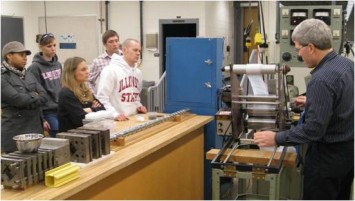
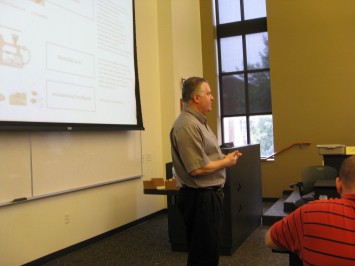
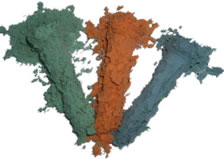
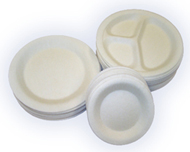
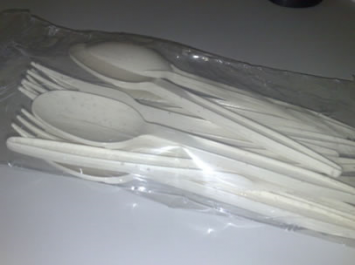
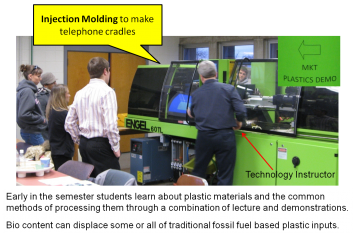



 Peter Kaufman, Illinois State University. Main research areas are managerial decision-making, consumer behavior issues such as extended warranty purchase and in-store decision-making, and interdisciplinary student team learning.
Peter Kaufman, Illinois State University. Main research areas are managerial decision-making, consumer behavior issues such as extended warranty purchase and in-store decision-making, and interdisciplinary student team learning. 
